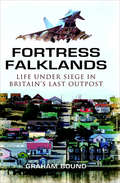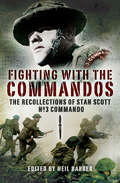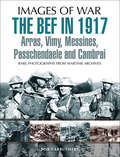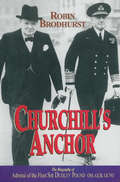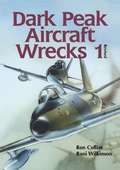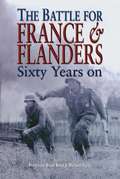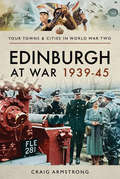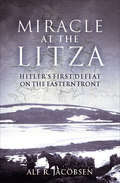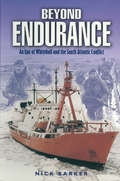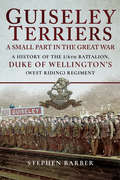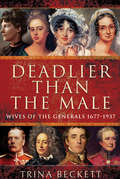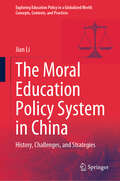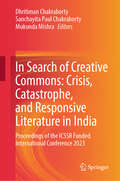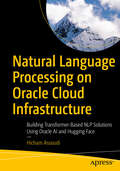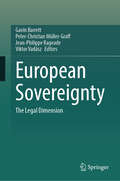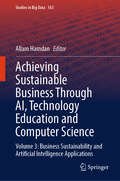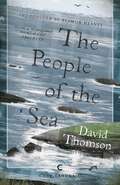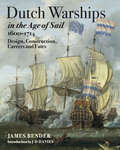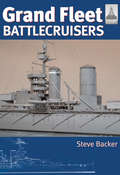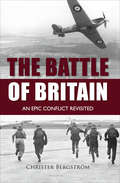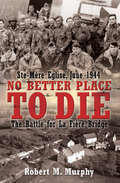- Table View
- List View
Fortress Falklands: Life Under Siege in Britain's Last Outpost
by Graham BoundThe Falkland Islands sprang to fame in 1982, when Argentine Forces invaded and occupied them. British rule was re-established following an intensely violent war. But, as the 30th anniversary of that conflict approaches, the causes of conflict in the Falklands have not been resolved. Simmering tensions means that a powerful military machine remains on the islands, and its guard is never relaxed. The UK has some of its most modern and powerful defense assets there, and on permanent standby. These include Eurofighter Typhoon interceptors; ground to air missiles; mountaintop radar sites, and destroyers and frigates. In addition, the islanders themselves have a potent infantry defense force. Graham Bounds book Fortress Falklands examines the defenses of the islands today and the ongoing need for vigilance.Relations with Argentina have deteriorated since the discovery of oil in Falklands waters and a boom in the Falklands economy. In response, Buenos Aires has established a ban on shipping links between South America and the islands, and they exploit every opportunity to press their case for sovereignty. Islanders believe they are under economic siege.
Fighting with the Commandos: Recollections of Stan Scott, No. 3 Commando
by Neil BarberFighting With The Commandos tells what the Second World War was like for a fighting soldier. After enlisting underage, he was 'found out', joined the Home Guard and then a Young Soldiers Unit (for those too young to serve overseas). He managed to get out to Iraq but was again sent home.He then joined 3 Commando led by Brigadier Peter Young and landed on SWORD Beach on D-Day. He graphically describes the action thereafter which included being among the first to reach Pegasus Bridge and relieve the glider borne troops under Major John Howard. Plenty of excitement and danger were to follow and readers will revel in a no-holds-barred memoir which points an illuminating picture of life for the rank-and-file in the build-up to the climax of the war.
The BEF in 1917: Arras, Vimy, Messines, Passchendaele and Cambrai (Images of War)
by Bob CarruthersThis new volume in the long-running Images of War series features the actions of the British Army at Passchendaele. The book is comprised of rare photographs illustrating the years of fighting on the northern sector of the Ypres salient, which finally culminated in the capture of the ridge at Passchendaele, accompanied by a powerful text written by Official War Correspondent Philip Gibbs, who was an eyewitness to the events. Photographs from the battlefield illustrate the terrible conditions, which the British forces on the battlefield endured in the notorious engagement, which has become synonymous with mud and squalor.This book incorporates a wide range of images, encompassing the actions of the British infantry and their supporting artillery. Also featured are images which depict the almost incomprehensible state of the waterlogged trenches. Portraits of the British troops are contrasted with German prisoners of war and the endless battle to get the supply columns through to the front.
Churchill's Anchor: The Biography of Admiral Sir Dudley Pound (Military History Ser.)
by Robin BrodhurstDudley Pound served for longer on the Chiefs of Staff Committee in wartime than any other serviceman in either of the two World Wars. He was the professional head of the Royal Navy from July 1939 until his resignation, shortly before his death, in August 1943. He had to cope with the problems of Hitler by day and Churchill by night, of trying to make the old ships of the Royal Navy face the challenge of the modern navies of Germany, Italy and Japan.Pound had to run the operational HQ of the Admiralty while also chairing the Chiefs of Staff Committee. As such he was involved in some of the most controversial decisions in the Naval War in Norway 1940, the sinking of the French Fleet, the despatch of The Prince of Wales and Repulse to Singapore, the scattering of convoy PQ17 while, all the while, courageously fighting failing health and enduring huge strain.However by the time of his death the Battle of the Atlantic had been won and the Mediterranean cleared. Churchill's Anchor aims to put Dudley Pound's achievements into context.He held a succession of key commands from a battleship at Jutland to the Mediterranean fleet for four years, alternating with key appointments at the Admiralty. He was at the centre of naval affairs from 1914 until his death in 1943.
Dark Peak Aircraft Wrecks 1
by Ron Collier Roni WilkinsonCivil and military aircraft types are represented, from biplanes to modern jet fighters. This is an invaluable guide for walkers and ramblers, as well as for all those interested in flying and the history of aviation.
The Battle for France & Flanders: Sixty Years On (Military History Ser.)
by Michael Taylor Brian BondThe Fall of France in 1940 has been well chronicled but numerous misconceptions remain.This fascinating and thought-provoking collection of essays on wide-ranging issues covering the politics and fighting on land, sea and in the air will be greatly welcomed by academics and military history enthusiasts.Topics covered include the preparations of the BEF, the failure of allied counter attacks, the air war, the Royal Navys's role in the campaign, the influence of the Battle on British military doctrine and the repercussions from the British, French and German angles.
Edinburgh at War, 1939–45 (Your Towns & Cities in World War Two)
by Craig ArmstrongScotland was of grave strategic importance during the war because of its geographical position and its capital was the location of a significant number of important military and civil organizations. Edinburgh Castle became the HQ of the Scottish Home Forces whilst the Forth was a vitally important port and was heavily protected even before the start of the war. Its importance was marked by its attracting the first air raid of the war on mainland Britain when a force of German bombers was sent to attack naval shipping in the Forth on 16th October 1939. The raid was intercepted by the RAF which shot down at least two bombers and the entire action was witnessed by many civilians on the ground. The raid also caused the first civilian casualties when two women were injured in Edinburgh and two men machine-gunned in Portobello. Thousands lined the streets days later for the funeral of two of the Luftwaffe airmen.No member of the population of Edinburgh escaped the war, whether it was the huge numbers of men and women from the area who came forward for service in the military or in roles such as the Home Guard, ARP services, nursing, working in vital war industries, struggling to maintain a household under strict rationing and the stresses of wartime life, or children evacuated from the city to the rural areas of Scotland to escape the expected bombing campaign (even though the Archbishop of Edinburgh called for their return if there was insufficient provision of religious instruction in reception areas).Edinburgh was also home to a sizable Italian community which was badly affected by internment and the subsequent tight restrictions on movement and civil rights. The Italian community was also subjected to violent attacks when rioting mobs attacked Italian owned business throughout the city (although one family business was spared because one of the sons was known as a fanatical supporter of Hibs).Edinburgh at War 1939-1945 poignantly commemorates the efforts and achievements of Edinburgh: workers, fighters, families divided, all surviving astounding tests.
Miracle at the Litza: Hitler's First Defeat on the Eastern Front
by Alf R. JacobsenThe dramatic story of the Nazis’ 1941 attempt to take Murmansk, including firsthand accounts of the action on the front line.In the early summer of 1941, German mountain soldiers under the command of General Eduard Dietl set out from northern Norway up through Finland to the Russian border. Operation Silberfuchs was underway. The northernmost section of the Eastern Front would ensure Hitler supplies of nickel from Finnish mines and bring the strategically important port city of Murmansk under German control. The roadless rocky terrain and extreme weather created major challenges for the German troop movements. Despite this, Dietl’s men made quick gains on his Russian foe, and they came closer to Murmansk. Despite repeated warnings of a German attack, Stalin had failed to mobilize, and the British hesitated to come to the rescue of the Red Army.But while the weather conditions steadily worsened, the Russians’ resistance increased. Three bloody efforts to force the river Litza were repulsed, and the offensive would develop into a nightmare for the inadequately equipped German soldiers.In an exciting and authoritative narrative based on previously unpublished material, Alf Reidar Jacobsen describes the heavy fighting that would lead to Hitler’s first defeat on the Eastern Front. With firsthand accounts of the fighting on the front line, this is a dramatic new account of a forgotten but bloody episode of World War II.
Beyond Endurance: An Epic of Whitehall and the South Atlantic Conflict (Post World War Ll Ser.)
by Nick BarkerAn Epic of Whitehall and the South Atlantic Conflict. This is the story of HMS Endurance before, during and after the Falklands conflict.
Why Doesn't My Doctor Know This?: Conquering Irritable Bowel Syndrome, Inflammatory Bowel Disease, Crohn's Disease and Colitis
by David DahlmanA natural approach to stubborn gastrointestinal symptoms! You&’re miserable, your quality of life has changed, your medications don&’t help . . . But if your doctor hasn&’t given you relief, there is another way to conquer symptoms of irritable bowel syndrome, Crohn&’s disease, and any form of colitis: gas, bloating, indigestion, heartburn, reflux, GERD, diarrhea, constipation, alternating diarrhea/constipation, abnormal bowel urgency, abnormal bowel frequency, pain, spasms, blood, mucus, hemorrhoids, and hiatal hernia. Why Doesn&’t My Doctor Know This? details the only physician-designed step-by-step plan—combined with dietary advice and an all-natural supplement program that addresses the nine variables that may be causing your condition.
Whole Grains for a New Generation: Light Dishes, Hearty Meals, Sweet Treats, And Sundry Snacks For The Everyday Cook
by Liana KrissoffDelicious recipes, mouth-watering photos, and fresh, creative tips on cooking with amaranth, quinoa, and more. With more than 150 ideas for breakfast and brunch, appetizers and small bites, salads, main dishes and side dishes, sweets, snacks, sundry baked goods, and more, this refreshingly modern cookbook features recipes that include whole grains like barley, buckwheat, corn, oats, quinoa, and wheat. While some of these recipes happen to be vegetarian, some vegan, and some gluten free, all of them have one common characteristic: great flavor. Featuring ingredients that are readily available at your grocery store, Whole Grains for a New Generation shows how easy, delicious, and exciting whole grain cooking can be. Says author Liana Krissoff in the Introduction, &“My cooking is inspired by all that&’s flavorful, and I hope it serves as inspiration to you in turn.&”
Guiseley Terriers: A History of the 1/6th Battalion, Duke of Wellington's (West Riding) Regiment
by Stephen BarberAfter the Battle of the Lys in April 1918, Field-Marshal Sir Douglas Haig said of the 147th (Territorial) Brigade:'I desire to express my appreciation of the very valuable and gallant services performed by troops of the 49th (West Riding) Division since the entry of the 147th Brigade into the Battle of Armentires. The courage and determination showed by this division has played no small part in checking the enemys advance and I wish to convey to General Cameron and all the officers and men under his command my thanks for all they have done.'In April 1918, the Saturday night soldiers from Bingley, Guiseley, Haworth, Keighley, Settle and Skipton halted the German advance at a critical time in the war during the German spring offensive. Haigs Backs to the Wall order had just been issued when the 1/6th Duke of Wellingtons Regiment was sent to the front-line at Armentires. After nearly four years at the front, they had been transformed from part-time enthusiastic amateurs to battle hardened veterans, having fought in some of the Great War's major battles, including suffering the effects of mustard gas at Nieuport. It was a source of pride to the men of the battalion that they had never given up ground to the enemy, unless ordered to by a higher authority, and only then reluctantly.Using newspaper archives, war diary extracts, personal accounts and previously unpublished photographs, Stephen Barber retraces the formation and history of the 1/6th Duke of Wellingtons Regiment from the creation of the Volunteer Rifle Corps in 1860, to its mobilisation in the Great War. A day-by-day account of their movements and actions over the four-year period culminates in the pursuit of the retreating German Army at Famars, on 1 November 1918.
Deadlier than the Male: Wives of the Generals, 1677–1937
by Trina BeckettHow much influence did notable wives have on the leading commanders in British military history? These women tend to be disregarded but, as Trina Beckett demonstrates in this revealing and thought-provoking study, their influence has often been profound. Taking examples from the eighteenth century to the Second World War, she uncovers a hidden dimension in the rise to prominence of some of Britains most famous soldiers and documents a series of fascinating relationships between powerful men and equally powerful women.Sarah Churchill, Duchess of Marlborough, and Dorothy, Countess Haig are perhaps the most famous examples of wives who played important roles in their husbands brilliant careers. However, sometimes the lives of leading commanders would be hindered as well as helped by their wives. Paulina Wood proved such a disastrous hostess that she almost destroyed the career of Sir Evelyn Wood, and Lord Roberts reputation for jobbery owed much to his wife Noras constant interference in appointments.Trina Becketts perceptive and absorbing case studies reveal much about the women whose lives she portrays and the contribution they made to their distinguished husbands military careers.
The Moral Education Policy System in China: History, Challenges, and Strategies (Exploring Education Policy in a Globalized World: Concepts, Contexts, and Practices)
by Jian LiThis book examines the moral education policy system in China, discussing the challenges of promoting moral education policy in the country, and proposes relative strategies. It explores the moral education policy in China from various perspectives, including in preschool education, primary education, higher education, vocational type-based higher education, secondary vocational education, English education, music education, classroom teaching, citizenship education, and Chinese language education. This book serves as a guide for scholars and researchers who are interested, and work in, research on moral education policy in China, administrators, stakeholders in China's education system, and graduate students who major or minor in the field of moral education policy in China.
In Search of Creative Commons: Proceedings of the ICSSR Funded International Conference 2023
by Mukunda Mishra Dhritiman Chakraborty Sanchayita Paul ChakrabortyThis book contains selected papers presented at the international conference titled 'In Search of Creative Commons: Crisis, Catastrophe, and Responsive Literature in India', held at the Abid Ali Khan Centre for Digital Archive and Translation of Cultures, Gour Mahavidyalaya (College) from 31 August to 2 September, 2023 in collaboration with the Department of English, Dr. Meghnad Saha College. The conference was funded by the Indian Council of Social Science Research (ICSSR). In this book, three basic questions are considered. First, as humans try to live in-and-through catastrophes and exceptional situations in the contemporary world, what new perspective can literature as a creative form offer for healing and restorative purposes? Second, what new idioms and narrative styles, massive crises such as famine, partition, migration, the decimation of forests, rivers, and the disappearance of villages held up in creative articulations in colonial and postcolonial times in India? Can these representations be called “responsive literature”? Further, and this is the third major contention of this book, how can responsive literature be thought of as a conceptual category? What new transdisciplinary optic should be adopted to go beyond the limits of the “literary” and eventually include the “non-literary”? The objective of these discussions was to contribute to the larger discursive literature on disaster studies, which we believe has been excessively hegemonized by concepts from the West. By bringing in indigenous ideas from Bhasa Sahitya (language and literature), the images of samaj (society), samata (equity), and ahimsa (non-violence), the existing literature on catastrophe and crisis studies can finally be decolonized.
Natural Language Processing on Oracle Cloud Infrastructure: Building Transformer-Based NLP Solutions Using Oracle AI and Hugging Face
by Hicham AssoudiThis book demonstrates how to use Oracle Cloud Infrastructure (OCI) and Hugging Face technologies to develop advanced NLP solutions. Through a practical case study, it addresses common NLP challenges and offers strategies for creating efficient, cost-effective transformer-based models. By the end of this book, you will have the skills and knowledge to create cutting-edge NLP solutions on OCI, customized to meet the needs of various industries and projects. The book takes you through the complete NLP solution life cycle—covering data preparation, model fine-tuning, deployment, and monitoring—while highlighting key topics such as cost-effectiveness and responsible AI for NLP implementations. Drawing from real-world experience and offering practical insights, it bridges the gap between theory and practice, equipping you to design and deploy scalable, cost-efficient NLP solutions. What You Will Learn Master key NLP concepts and the OCI ecosystem Create high-quality datasets using Hugging Face and OCI Data Labeling Service Fine-tune domain-specific pre-trained models from Hugging Face using OCI Data Science Notebook Sessions Deploy and operationalize your models with OCI Data Science Model Deployments Automate the NLP life cycle with OCI Data Science Pipelines Implement cost-effective strategies throughout the entire NLP life cycle, from dataset preparation to model training and deployment Who This Book Is For A diverse audience interested in implementing NLP solutions on Oracle Cloud Infrastructure: NLP practitioners, data scientists, and machine learning engineers who want to learn how to leverage Oracle AI and Hugging Face to implement an end-to-end NLP solution life cycle, from data preparation to model deployment; Oracle practitioners who want to expand their Oracle expertise by exploring OCI's advanced capabilities for building and scaling cutting-edge NLP solutions in enterprise environments; business decision makers who want to discover the strategic benefits of NLP solutions on OCI, including cost-effectiveness and responsible AI, while driving business value
European Sovereignty: The Legal Dimension
by Gavin Barrett Jean-Philippe Rageade Peter-Christian Müller-Graff Viktor VadászIn October 2022, the Academy of European Law (ERA) in Trier celebrated its 30th anniversary with a congress devoted to the legal dimension of the European sovereignty. 1992 was not only the year in which the ERA was founded, but also a key moment in the history of European integration, as it marked the signing of the founding treaty of the European Union, the Treaty of Maastricht. While sovereignty was a highly controversial issue at the time, the (geo)political and economic challenges facing the Union in recent years have brought it back to the centre of the debate. This book brings together some of the papers presented at the Jubilee Congress and explores recent concepts such as 'budgetary sovereignty', 'strategic sovereignty', and 'digital sovereignty'.
Artificial Intelligence and Digital Twin Technology: 1st International Conference, IconAIDTT 2023, Sivakasi, India, April 26–28, 2023, Proceedings (Communications in Computer and Information Science #1972)
by Utku Kose Bui Thanh Hung Kottilingam Kottursamy Valarmathi K. Ramathilagam A. Sankarganesh SeeniThis book constitutes papers from the 1st International Conference on Artificial Intelligence and Digital Twin Technology, IconAIDTT 2023, held in Sivakasi, India, April 26–28, 2023. The 12 full papers and the 1 short paper included in this volume were carefully reviewed and selected from 41 submissions. The papers cover the following topics: Advanced AI and IoT Solutions for Environmental, Healthcare, and Security Challenges; Deep Learning Techniques for Wireless networks and Data Analysis.
Achieving Sustainable Business Through AI, Technology Education and Computer Science: Volume 3: Business Sustainability and Artificial Intelligence Applications (Studies in Big Data #163)
by Allam HamdanThis book focuses on the symbiotic relationship between sustainable practices and cutting-edge AI technologies, offering insights into how businesses can thrive in a rapidly evolving landscape. This book discovers how AI is revolutionizing sustainability efforts, driving efficiency, and fostering a greener tomorrow. From smart energy management to ethical supply chain practices, this book is a guide for organizations looking to harness the power of AI for a sustainable future. Engaging, informative, and forward-thinking, this book is essential reading for leaders shaping the future of business.
Star Trek: The Next Generation 365
by Terry J. Erdmann Paula M. BlockA complete episode-by-episode exploration of the hit TV series—with rarely seen photos and illustrations. With the launch of Star Trek: The Next Generation, Gene Roddenberry somehow managed to recapture lightning in a bottle. This new incarnation of Star Trek was an instant hit, and its popularity inspired four films and three spin-off television series. A must-have for fans, Star Trek: The Next Generation 365 provides a fresh, accessible overview of the entire series, including an authorized guide to all 178 episodes. Featuring classic and rarely seen photography and illustrations, this visual celebration of the voyages of Captain Picard, his crew, and the Enterprise-D offers a loving look back at the Emmy and Hugo Award–winning series.
The People of the Sea: Celtic Tales of the Seal-Folk (Canons #8)
by David Thomson&“Readers will be carried away on successive waves of pleasure [and] irresistible holistic beauty&” in this journey to uncover myths of Selchies (Seamus Heaney, from the introduction). When author David Thomson travelled across the coasts of Scotland and Ireland to seek out the legend of the selchies—mythological creatures who transform from seals into humans—a magical world emerged before him. Thomson was enchanted by tales of men rescued by seals in stormy seas, and others who took seal-women for their wives and had their children suckled by seal-mothers. The People of the Sea is Thomson&’s poetic record of his journey into this world, and his encounters with people whose connection to the sea and its fertile lore runs deep. Winner of the McVitie Prize for his memoir Nairn in Darkness and Light, David Thomson offers &“a splendid resurrection of a life that has almost vanished.&” Timeless and haunting, The People of the Sea retains its spellbinding charm and brings to life the enchanting stories of these mysterious creatures of Celtic folklore (Daily Telegraph, UK).&“I know of few books which so ably open a window on the Gaelic scene today or which so faithfully reflect the mind, vigour and courtesy of its people…Pounds on the imagination like surf on a reef&”—Observer, UK
Dutch Warships in the Age of Sail, 1600–1714: Design, Construction, Careers and Fates
by James BenderThis definitive study presents a complete account of the Dutch Republic&’s naval fleet during its golden age as a world power. The Netherlands was by far the most important maritime power of the seventeenth century. It dominated seaborne trade with the largest merchant fleet in the world. Born out of an 80-year struggle against Spain for independence, the Dutch republic relied on naval power to protect its freedom, promote its trade and defend its overseas colonies. Yet the ships that made up its fleets are among the least studied of any in the age of sail. This is partly because a decentralized administration of five separate admiralties, often producing ships of the same name at the same time, as well as competing systems of measuring ships, all lead to confusion and error. In this comprehensive volume, James Bander delivers the first definitive listing of all Dutch fighting ships—whether purpose-built, purchased, hired or captured—from the heyday of the United Provinces. Each entry is complete with technical details and summaries of the ship&’s career. It also provides administrative, economic and technical background, and outlines the many campaigns fought by one of the most successful navies in history.
Grand Fleet Battlecruisers (ShipCraft)
by Steve BackerThe ShipCraft series provides in-depth information about building and modifying model kits of famous warship types. Lavishly illustrated, each book takes the modeller through a brief history of the subject class, highlighting differences between sister-ships and changes in their appearance over their careers. This includes paint schemes and camouflage, featuring colour profiles and highly-detailed line drawings and scale plans. The modelling section reviews the strengths and weaknesses of available kits, lists commercial accessory sets for super-detailing of the ships, and provides hints on modifying and improving the basic kit. This is followed by an extensive photographic gallery of selected high-quality models in a variety of scales, and the book concludes with a section on research references books, monographs, large-scale plans and relevant websites.rnrnThis volume follows the format of the highly successful Flower Class where the extent has been doubled to include far more illustrations of the many different designs, from the Invincible of 1906 to the Renowns of 1915, and including the hybrid large light cruisers Courageous, Glorious and Furious.
The Battle of Britain: An Epic Conflict Revisited
by Christer BergströmA thorough look at this turning-point WWII aerial battle, with eyewitness accounts, maps, and rare photos: &“incredibly well-researched&” (Aircrew Book Review). By late summer 1940, Nazi Germany had conquered all its opponents on the continent, including the British Army itself, which was forced to scramble back aboard small boats to its shores. A non-aggression pact with the Soviet Union in hand, Hitler had only one remaining object that season—the British Isles themselves. However, before he could invade, his Luftwaffe needed to wipe the Royal Air Force from the skies. History&’s first strategic military campaign conducted in the air alone was about to take place. This book contains a large number of dramatic eyewitness accounts, even as it reveals new facts that will alter common perceptions of the battle. For example, the twin-engined Messerschmitt Bf 110 was actually a good day fighter, and it performed at least as well in this role as the Bf 109 during the battle. The Luftwaffe&’s commander, Hermann Göring, performed far better than has been believed. The British night bombers played a more decisive role than previously thought; in addition, this book disproves that the German 109 pilots were in any way superior to their Hurricane or Spitfire counterparts. The author has examined records from both sides and provides surprising statistics that shatter much conventional wisdom—laying out the Battle of Britain as seldom seen before. Includes color photos of the relevant aircraft.
No Better Place to Die: Ste-Mère Eglise, June 1944: The Battle for La Fière Bridge
by Robert M. MurphyThis &“outstanding memoir&” of a WWII soldier&’s experience at Normandy gives &“a fuller picture of what the 82nd [Airborne] accomplished on D-Day&” (WWII History). In the dark early hours of D-Day, nearly every airborne unit missed its drop zone, creating a kaleidoscope of small-unit combat. Fortunately for the Allies, the 505th Regimental Combat Team of the 82nd Airborne Division hit near its drop zone. Its task was to seize the vital crossroads of Sainte Mère Eglise and to hold the bridge over the Merderet River at nearby La Fière. The paratroopers reached the bridge only to be met by waves of German tanks and infantry. Reinforced by glider troops, the 505th not only held the vital bridge for three days but launched a counterattack to secure their objective once and for all, albeit at gruesome cost. In No Better Place to Die, WWII veteran Robert M. Murphy provides a personal chronicle of countless acts of heroism by the men of the 505th. No World War II veteran is better known in 82nd Airborne circles than Robert M. &“Bob&” Murphy. A Pathfinder and member of A Company, 505th PIR, Bob was wounded three times in action, and made all four combat jumps with his regiment, fighting in Sicily, Italy, Normandy, and Holland. He was decorated for valor for his role at La Fière and is a Chevalier of the French Legion of Honor. After the war, he was instrumental in establishing the 505th RCT Association. A selection of the Military Book Club.
